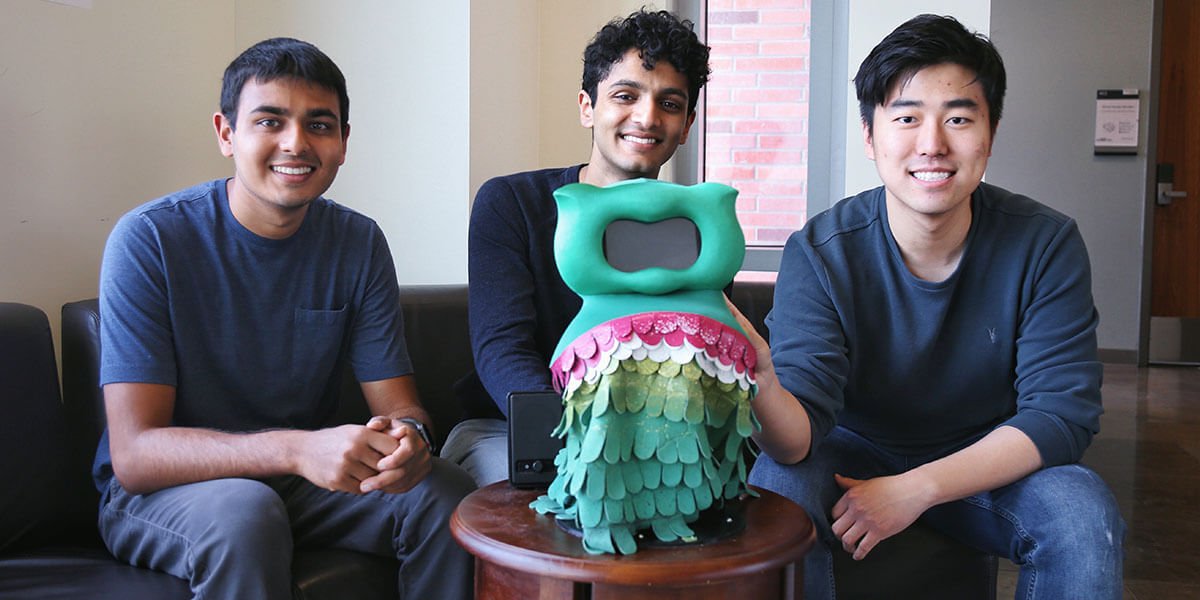Scientists who designed an artificially intelligent robot that helped children with autism boost their learning and social skills hope such technology could one day aid others with the developmental disorder.
The study saw seven children with mild to moderate autism take home what is known as a socially assistive robot, named Kiwi, for a month. According to a statement by the University of Southern California where the team is based, the participants from the Los Angeles area were aged between three and seven years old, and played space-themed games with the robot almost daily.
As Kiwi was fitted with machine-learning technology, it was able to provide unique feedback and instructions to the children based on their abilities. For instance, if the child got a question wrong Kiwi would give prompts to help them solve it, and tweak the difficulty levels to challenge the child appropriately.
The authors of the paper published in the journal Science Robotics found all of the children saw their reasoning skills improve. Some 92 percent had better social skills after playing with Kiwi for a month, according to the statement.
Cameras hooked up to Kiwi enabled the team to also monitor how engaged the kids were with the robot, based on where their eyes were looking, the position of their heads, their speech and how well they performed on a task. The team found engagement ranged from 48 to 84 percent on average among the participants, and Kiwi was able to detect a disengaged child with 90 percent accuracy. That was despite potential distractions such as home appliances, as well as friends and family. The team found participants were most engaged immediately after the robot had spoken, but this went down if the gap lasted longer than a minute.
Lead author Shomik Jain, told Newsweek the children became less engaged as the month went on.
"Examples of child behavior during these disengaged periods included playing with toys, interacting with siblings, and even abruptly leaving the intervention setting."
"This served as a motivation for our work, which created models that could be used for real-time recognition and response to disengagement in order to re-engage the child to continue with the educational and/or therapeutic activity," he said.

Around one in 59 children in the U.S. have autism, according to the U.S. Centers for Disease Control and Prevention. People with the condition, also known as autism spectrum disorder (ASD), can find it challenging to communicate and interact in the same way as neurotypical people. While therapists can give individualized services that help to teach such children social skills, not everyone can afford this, the team said. As such, they wanted to explore the potential of plugging the gap with robots.
Co-author Maja Matarić Maja J Matarić, distinguished professor of computer science, neuroscience, and pediatrics at the University of Southern California told Newsweek:
"We and other researchers have been actively exploring SAR [socially assistive robotics] for children with ASD, because SAR has great potential in supporting the learning of children with ASD. Since we were one of the very few labs that has worked in SAR from its inception, we used our experience over the past 15 years to develop the robot that would meet the needs and interests of children with ASD while being safe and non-threatening."
Jain said: "Currently, robots are limited in their ability to autonomously recognize and respond to human behavior, especially in atypical users and real-world settings such as homes and schools. Engaging users is a key HRI [human-robot interaction] capability previously unexplored in the context of long-term, in-home SAR interventions for children with ASD.
"Therefore this study is the first to apply machine learning modeling to long-term in-home data with children with ASD. "
Asked why the children's engagement and learning improved after interacting with the robot, Matarić said: "The purpose of a socially assistive robot, in general, is to serve in the role of a motivating and supportive companion. In the specific context of this study, the robot served to motivate the children to do the math exercises, and to support them as they were succeeding or failing during those exercises."
However, children with autism don't need robots to reap the benefits seen in the study, Matarić said.
"The most therapeutic effects come from caring human interactions," Matarić explained. "Parents, siblings, caregivers and friends can effectively motivate and support learning and therapy of children with ASD by paying careful attention to what children find rewarding and encouraging, and focusing on those interactions, shaping toward the child's specific needs."
Uncommon Knowledge
Newsweek is committed to challenging conventional wisdom and finding connections in the search for common ground.
Newsweek is committed to challenging conventional wisdom and finding connections in the search for common ground.
About the writer
Kashmira Gander is Deputy Science Editor at Newsweek. Her interests include health, gender, LGBTQIA+ issues, human rights, subcultures, music, and lifestyle. Her ... Read more
To read how Newsweek uses AI as a newsroom tool, Click here.








